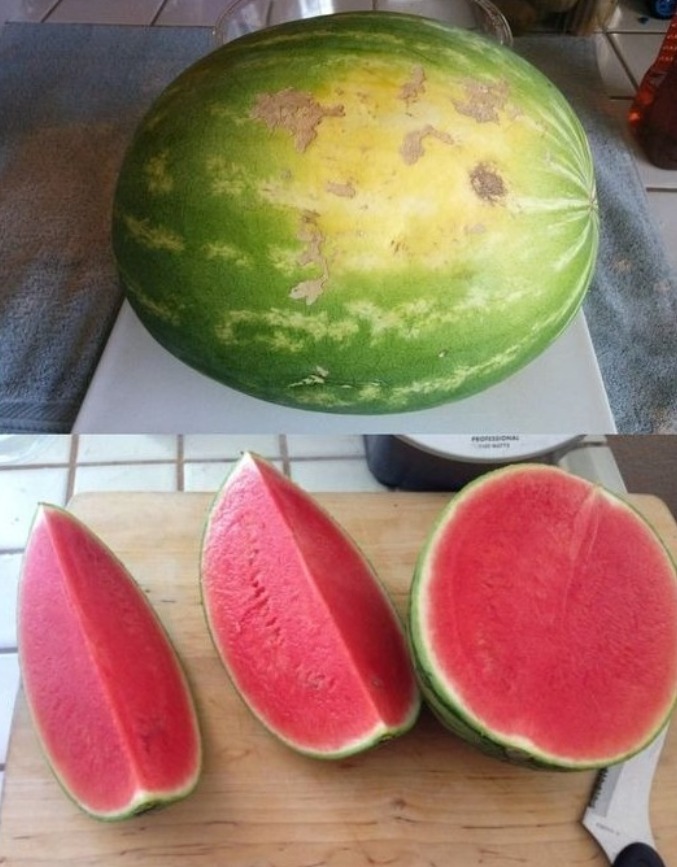ADVERTISEMENT
Title: Secrets to Choosing and Enjoying the Perfect Watermelon Every Time
Watermelon is the quintessential summer fruit, beloved for its refreshing sweetness, juiciness, and vibrant color. Whether you’re enjoying a slice at a picnic, blending it into smoothies, or making a fruit salad, the perfect watermelon can elevate any meal. But choosing the right watermelon can be a bit of a challenge, especially when there are so many options available. Fortunately, with a few expert tips, you can ensure that every watermelon you pick will be ripe, sweet, and perfectly juicy.
In this guide, we’ll share the secrets to selecting, cutting, and enjoying the perfect watermelon every time.
1. Know the Different Types of Watermelon
Before you start shopping, it’s important to know that not all watermelons are the same. There are a few different varieties, and each offers a slightly different taste and texture. The most common types include:
- Seedless Watermelon: This is the most popular variety. It has small, white seeds that are barely noticeable and offers a super-sweet, juicy flesh. Perfect for people who prefer a smooth eating experience without worrying about seeds.
- Traditional Watermelon: These watermelons contain black seeds that can be easily removed. They tend to have a slightly more fibrous texture but are just as sweet and refreshing as seedless varieties.
- Mini Watermelon: These small, round watermelons are perfect for smaller households or anyone who doesn’t want a large melon taking up space in the fridge. They are just as sweet as their larger counterparts but are easier to manage.
- Yellow or Orange Watermelon: For something a little different, yellow or orange watermelon offers a subtle twist. While the taste remains mostly the same, the color adds a unique visual appeal to fruit salads or other dishes.
2. Choosing the Perfect Watermelon: Look for These Key Indicators
Selecting a watermelon is about more than just picking up the biggest one you can find. Here’s what to look for to ensure you’re choosing the ripest and most flavorful watermelon:
- Check the Shape: A perfectly shaped watermelon should be symmetrical, without dents, cracks, or flat spots. Irregularities can be a sign of under-ripeness or damage.
- Look for a Sugary “Field Spot”: The “field spot” is the area where the watermelon sat on the ground and ripened in the sun. A light yellow or creamy field spot is a good sign that the watermelon is ripe and sweet. If the field spot is white or green, the melon may not be fully ripe.
- Give It a Tap: This is the classic method! Tap the watermelon with your fingers, and listen to the sound it makes. A ripe watermelon will produce a hollow, deep sound, while an under-ripe or overripe melon will sound dull. This is because the water inside the melon changes as it ripens.
- Examine the Weight: Watermelons should feel heavy for their size. When you pick one up, it should feel dense and full of water. A lighter melon could indicate that it’s not as ripe or juicy as it should be.
- Check for Sugar Lines: Sometimes, sugar lines or “sugar spots” will appear on the rind of very sweet watermelons. These are small, crystallized sugars that have seeped out and indicate a very ripe and sweet melon.
3. How to Store Watermelon for Maximum Freshness
Once you’ve chosen your watermelon, it’s important to store it properly to maintain its freshness and flavor. Here’s how to get the most out of your melon:
- Whole Watermelon: If you’re not planning to cut the watermelon right away, store it at room temperature in a cool, dry place. A whole watermelon can last for up to two weeks if kept whole.
- Cut Watermelon: Once the watermelon is cut, store the pieces in an airtight container in the refrigerator. It’s best to consume it within 3-4 days for optimal freshness, although it can last a bit longer. If you have leftover melon, try making watermelon juice or frozen watermelon cubes for smoothies.
